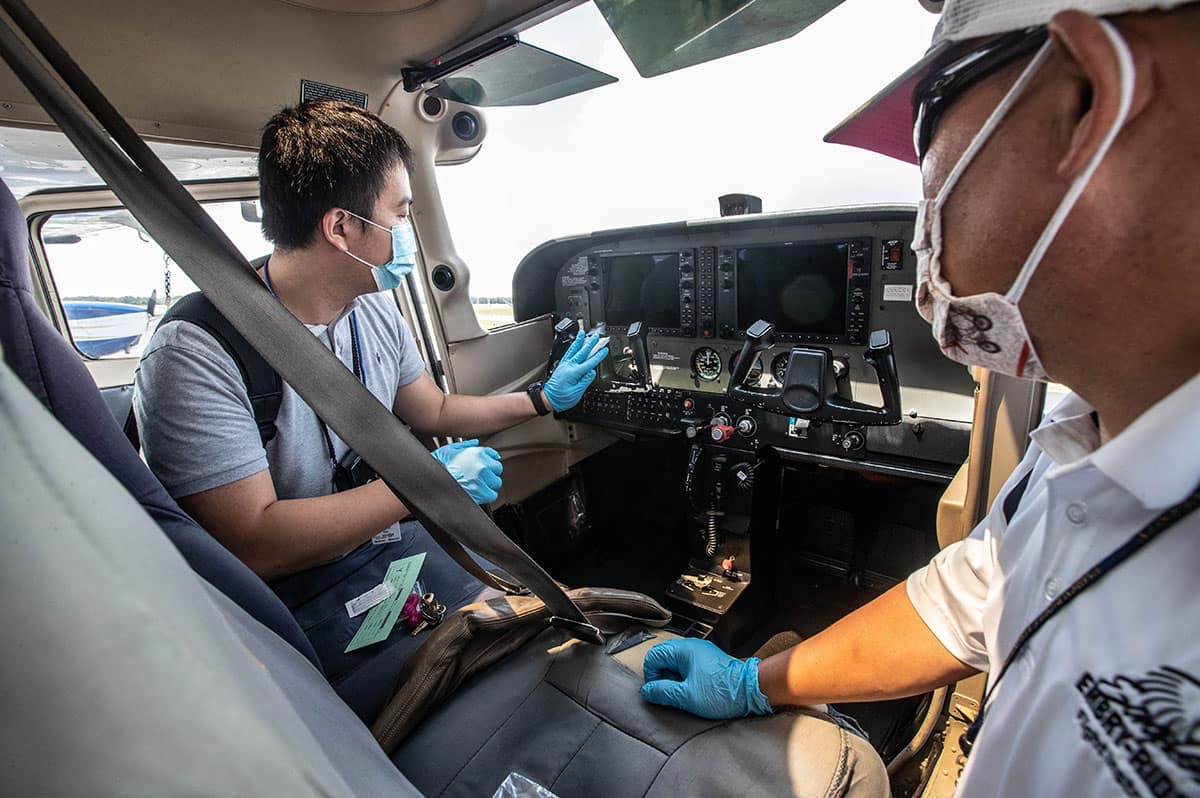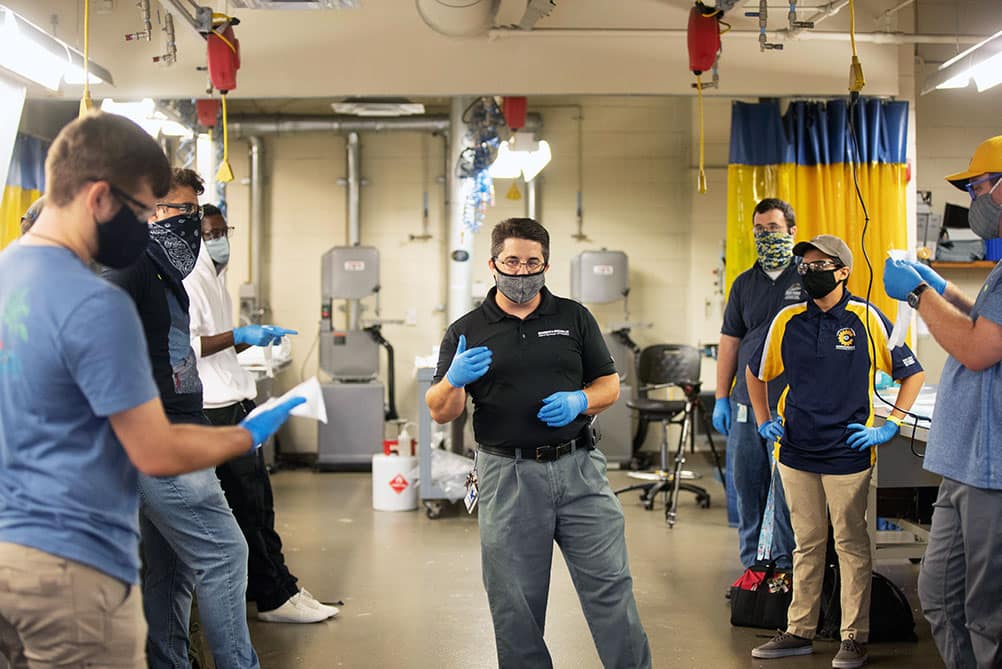Mitigating Risk

Nowadays, when two or three Aviation Maintenance Science (AMS) students work on an engine or other component in a group project, they wear face masks, face shields and gloves, as part of Embry-Riddle College of Aviation’s new Covid-19 pandemic safety measures.
“The students almost look like surgeons operating on a human patient,” said Eric Jones, chair of the Aviation Maintenance Science Department. “But it’s really worked effectively on mitigating the spread of Covid-19.”
As the college reopened its flight operations in May and resumed low-density classes in July for the Summer B term, it has made many adjustments to allow for social distancing in the classroom and a safe return for students to campus. The new Covid-19 pandemic safety measures are supported in part by the College of Aviation Dean’s Fund for Excellence.
“We spent a lot of time of developing protocols and have a document for every lab in this college,” said College of Aviation Dean Alan Stolzer. “We are going to do our best to make sure this fall is safe for everyone.”
Managing Risk
Although the entire university has put in place new Covid-19 rules, protocols and procedures, the College of Aviation has had to address special challenges to reduce risk in the cockpit and AMS labs during this global pandemic.
“We’re really good at mitigating risk. It is what we do, day in and day out—we mitigate risk on every flight training activity,” said Ken Byrnes ('01, '05), chair of the Flight Training Department at the Daytona Beach, Florida, Campus. “We are professionals at mitigating risk, and we are training our students to do the same.”
Lowering the risk starts with restricting access to campus and doing regular wellness and temperature checks before any student or staff member even reaches the flight line.
“The real work is before they get to that airplane,” Byrnes said. “We filter out anyone who may pose a risk to themselves or others.”
This is important because realistically there is only so much social distancing that can occur in an aircraft, he said. Additional cleaning and safeguards, like mask wearing, have been implemented and every flight student also gets gloves and products to clean the plane.
“They are shoulder to shoulder. In the airplane, you can’t social distance,” Byrnes said. “So the only way to mitigate it is to be clean. In the airplane, they are both wearing masks and there is extra cleaning.”
Despite the pandemic, he said the Flight Department has been fairly busy with students who wanted to return to continue their training. Additionally, Byrnes said the college did a lot of research to ensure that when pilots wore masks, they would not have any issues with oxygen intake and fatigue.
“I think all of us are also trying to lead by example,” said Daniel Friedenzohn, the college’s associate dean. “I think our faculty and staff have done a stellar job. It is a fluid environment. My sense is everybody is trying to do the right thing.”
Completing Training
 AMS students are also screened at an in-house wellness station, which takes their temperatures and gives them a wristband with a color code if they are clear, Jones said. In between classes, labs are also sanitized and disinfected.
AMS students are also screened at an in-house wellness station, which takes their temperatures and gives them a wristband with a color code if they are clear, Jones said. In between classes, labs are also sanitized and disinfected.
Jones said AMS students are required to have a certain number of hours of training in the program, per the Federal Aviation Administration. AMS students returning for Summer B classes were those who had their spring semester cut short, due to the pandemic closing campus, and were eager to complete their studies.
“Students put internships and jobs on hold to come back and finish their degree,” he said. “We have not seen a decline in the appetite for our graduates.”
AMS graduates are still finding jobs because airlines are still doing maintenance and preventative maintenance, Jones said, even if flying has decreased among commercial airlines. Certain sectors, like the cargo and business aviation industry, remain busy, despite the pandemic.
COA faculty and staff said some of the protocols that they developed in May when flight operations reopened were adapted to be used university-wide when classes on campus resumed in July for Summer B and will continue to be used this fall.
“We really worked together as a team,” said Byrnes. “It’s all about keeping the students and instructors safe and healthy.”

 Melanie Stawicki Azam
Melanie Stawicki Azam